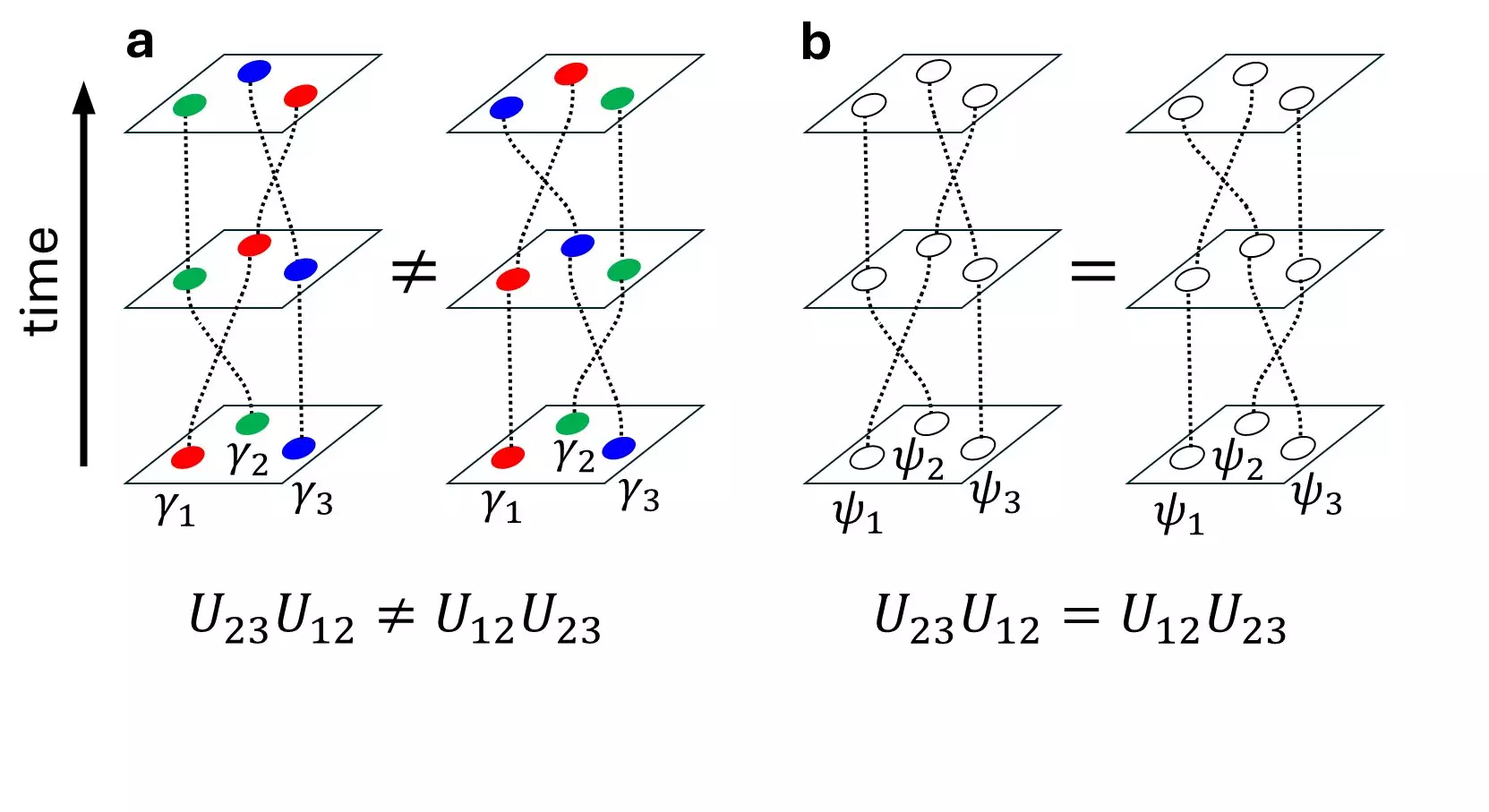In a groundbreaking study recently published in *Nature*, a collaborative research team has unveiled the existence of multiple Majorana zero modes (MZMs) within a single vortex of the superconducting topological crystalline insulator SnTe. Led by Professors Junwei Liu from the Hong Kong University of Science and Technology (HKUST), Jinfeng Jia, and Yaoyi Li from Shanghai Jiao Tong University (SJTU), this innovative research exploits crystal symmetry to manipulate the interactions between these elusive quasiparticles. This paradigm-shifting discovery is heralded as a crucial step toward developing fault-tolerant quantum computers, a significant leap in the quest for reliable and scalable quantum technology.
MZMs are unique in their nature as they exist at zero energy and possess non-Abelian statistics—properties that differentiate them from traditional particles like electrons. This distinctive behavior allows for braiding operations that do not merely result in the same final configuration regardless of the braiding order, making MZMs viable candidates for robust topological qubits. Their insensitivity to local disturbances further enhances their appeal for use in quantum computation. The challenge, however, had been the complexity involved in their manipulation, particularly due to their spatial separation within the vortex structures of superconductors.
In the burgeoning field of topological quantum computing, the ability to braid and control MZMs has presented formidable challenges to researchers. While progress has been made in creating artificial topological superconductors, achieving the needed precision in moving MZMs has hindered experimental advancement. The research conducted by the HKUST and SJTU team marks a significant shift in strategy; they utilized the crystal symmetry of SnTe to address these operational bottlenecks effectively.
By demonstrating the existence and hybridization of multiple MZMs within a single vortex without reliance on cumbersome real-space movements or intense magnetic fields, the researchers have paved a new path in the experimental landscape of quantum mechanics. Utilizing state-of-the-art low-temperature scanning tunneling microscopy, high-fidelity sample growth techniques, and sophisticated computational simulations, the team meticulously captured the presence of MZMs and their interactions.
The experimental efforts spearheaded by SJTU were pivotal in verifying the theoretical underpinnings proposed by the HKUST group. The team observed significant variations in the zero-bias peak—an essential indicator of MZMs—within the SnTe/Pb heterostructure when subjected to tilted magnetic fields. Following these observations, extensive numerical simulations revealed that the variations observed were indeed attributable to the crystal-symmetry-protected MZMs.
Employing the kernel polynomial method, the theoretical group was able to tackle large vortex systems encompassing hundreds of millions of orbitals, thus broadening the scope of understanding regarding MZMs and their potential applications. These simulations unlocked new insights into the properties of vortex systems, extending beyond merely confirming the existence of MZMs to exploring novel characteristics that could further enhance the practicality of topological qubits.
This landmark research not only establishes the foundational principles for the experimental realization of non-Abelian statistics but also lays the groundwork for future advancements in quantum computing. The ability to detect and manipulate multiple MZMs has far-reaching implications, potentially allowing for the creation of advanced topological qubits and novel quantum gates.
As the field of quantum computing continues to evolve, the findings from this study illuminate a promising avenue for developing more resilient quantum systems. The crystal-symmetry-protected MZMs in SnTe provide not just a theoretical framework but also a practical approach to overcoming some of the key hurdles faced by researchers in the quest for scalable quantum computing solutions.
The exploration of Majorana zero modes within superconducting topological insulators marks a critical conjunction of theory and experimentation, reflecting the collaborative effort required to push the boundaries of contemporary physics. The integration of crystallographic insights with advanced experimental techniques reveals a horizon ripe for exploration, as scientists aim to harness the unique properties of MZMs in future quantum technologies. As we advance into this new frontier, the implications of this research could redefine our approach to quantum computing, leading to systems that are not only powerful but also resilient against the myriad challenges posed by the quantum realm.

